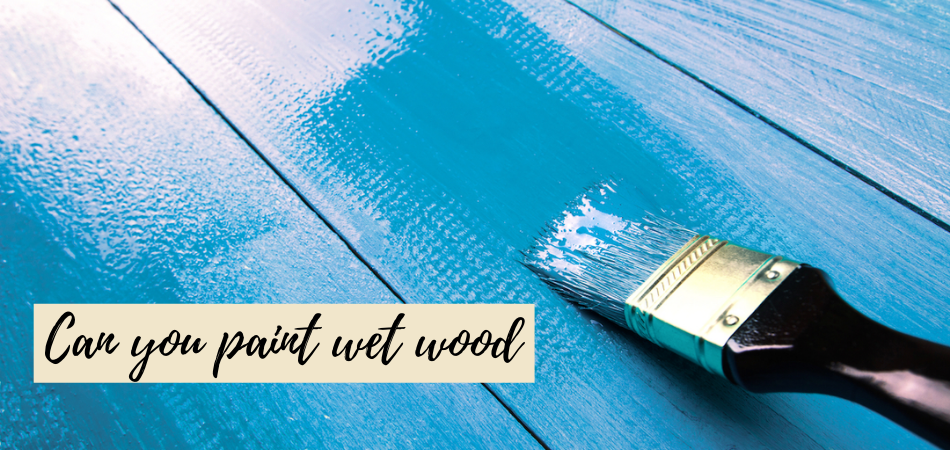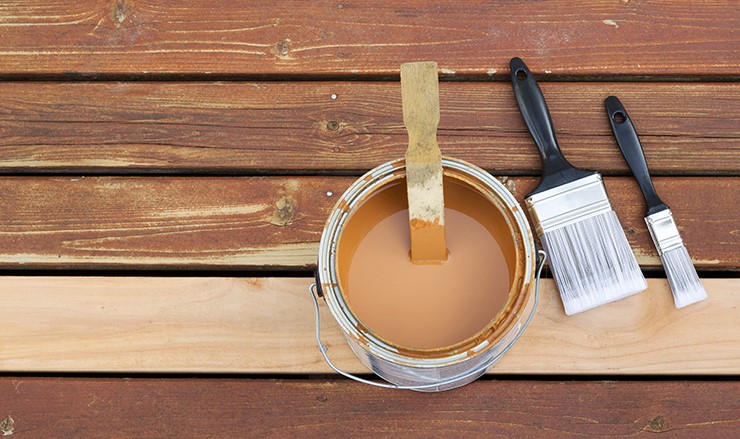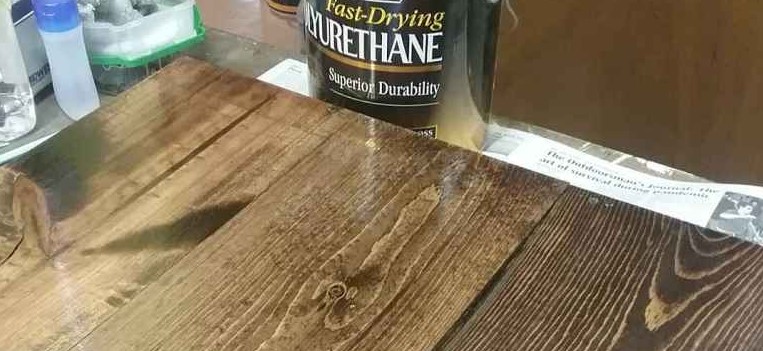Randy Charles is the owner of PaintCentric.com, a website dedicated to providing information, tips, tricks, and news about all things paint. With over 10 years...Read more
Painting wet wood is doable! You need the right materials and techniques. Painting wet wood can help protect it from further water damage and rot. Consider the type of paint you use. Also, think about other conditions that may affect your project.

Here’s what this article covers:
- Preparing wet wood for paint
- Types of paint to use
- Painting techniques
- Safety considerations
You can protect your home or project from water damage with the right knowledge and skills.
What is Wet Wood?
Wet wood means it’s damp, wet, or humid. It’s significant to know the gap between wet and dry wood. Painting wet wood can be tough and may cause the paint not to stick.
In this article, we’ll talk about wet wood and how to handle it when painting.
Types of Wet Wood
Wet wood is timber with a moisture content above 20%. It can happen because of high humidity, leaks, rain, or improper storage. It can be a problem if not treated. Coastal areas and homes with poor ventilation are more prone to wet wood.
Procyonid enzymes form when the moisture content is above 20%. These can damage paint and floor finishes, causing bubbling and peeling. Mold and fungi can also form on the surface, leading to rot.
Types of wet wood include:
- Unseasoned wood. This is freshly cut timber with a moisture content of up to 200%. It should never be used for furniture or construction unless sealed against water absorption.
- Greenwood has been air-dried for several years and has less than 80% moisture. Warping and other problems can still occur if stored improperly.
- Dry wood is cured at 10%-19% moisture. This makes it resistant to warping, swelling and staining, so it doesn’t need further sealing.
What Causes Wet Wood?
Wet wood is used for freshly-cut lumber with moisture in its fibers. This sap and moisture make it harder to work with and paint. It also affects adhesion, color, strength and stability.
It can be caused by cutting green wood, inadequate storage, improper seasoning methods, and high moisture content before painting. Certain trees, such as pines, are naturally higher in moisture than others, such as oak.
To know if your lumber is wet, use a specialized meter to check its moisture content (MC). The optimal MC for lumber intended for painting is 14 percent or less. Higher levels can result in the paint not adhering, warping and splitting, or mold growth.
Prepping Wet Wood for Painting

Painting wet wood can be difficult. Most paints require a dry, clean surface. But paint on wet wood may Bubble, Peel and Chip off as the wood dries. Several steps must be taken to make the paint look good and last on wet wood.
- Dry out the surface. Move outdoor wood to a shady area. Indoors, start a fan or dehumidifier. Use sandpaper or an orbital sander for larger projects. Make sure the surface is smooth.
- Rough up the surface with sandpaper for a better grip for paint adhesion. Wipe down areas with a damp cloth or denatured alcohol. If there’s sap residue on treated lumber or cedar/pine, use mineral spirits or turpentine to remove it.
- Apply an oil or water-based primer. Allow at least 24 hours between each application. Then apply your chosen type and color of paint.
Best Practices for Painting Wet Wood
Painting wet wood is not recommended. It can cause cracks, blisters, and a poor finish. To prevent these issues, the wood should be dry before painting. This can involve air drying or using a hair dryer or heat gun on a low setting. The drier the wood, the better the outcome.
If you must paint wet wood, prepare the surface as best as possible. Oil-based primer is usually recommended over water-based due to its slow drying time. It will provide a better seal and minimize visible damage. You can also use a quick-dry solution before painting. However, check with the manufacturer for directions on how to use the product on wet wood surfaces.
Alternatives to Painting Wet Wood

Painting wet wood? Not a great idea. The paint won’t stick, and the wood may rot. No worries, though! There are alternatives. This article will give you the lowdown on them. Read on to learn more!
Sealing Wet Wood
Sealing wet wood is an excellent choice to protect unfinished surfaces instead of painting. This process creates a water-resistant barrier against moisture damage to the wood and any future paint applications.
Start with a clear wood sealer. This will help prevent existing and future dampness, which can cause rot or decay. After spraying or brushing a thin layer of the sealer across the entire wood surface, let it dry before beginning any painting or refinishing projects.
Apply a penetrating stain if you want to leave the finished product unpainted and visible. This will better protect it from fading due to light or weather conditions. A semi-transparent finish lets you still see the natural fibers in the grain without covering them up. For more protection, use an opaque coating or two coats of semi-transparent or opaque finishes. This will maximize its impact resistance and wear from everyday use.
Replacing Wet Wood
If the wood in your home is exposed to water for long periods, action must be taken to protect it. Painting on wet wood can trap moisture and worsen the condition. Instead, follow these simple steps to replace the wet wood and keep its structural integrity.
Replace Wet Wood:
- Remove existing paint, sealants or coatings from the paneling or siding gently.
- Use a wide-blade screwdriver and hammer to remove nails and screws carefully.
- Cut out pieces of drywall every 12″ with a drywall saw to remove sections of affected wood without compromising stability.
- Put in lumber of the same thickness to replace rotted pieces. Secure them with four-inch nails for full boards and two-inch nails for half boards. Have at least three nails per joint.
- Cover exposed endpoints with paint, sealant or other coating materials (uncoated lumber will not be water resistant).
Conclusion
To finish off, wet wood can be painted in some situations. But, before doing so, many factors need to be considered. Exterior acrylic paint can be used on dry wood outdoors if the conditions are right and extra steps are taken. This should be done carefully. Painting wet wood usually results in the finish peeling or cracking. Plus, the surface ends up being uneven with poor adhesion.
Generally, it’s best to let the wood dry completely before painting or staining. However, wet wood can be painted for interior applications like cabinets and trim work with caution and a well-crafted plan.
Frequently Asked Questions
Is it possible to paint wet wood?
No, it is not recommended to paint wet wood as it won’t dry properly, and the wood may suffer from water damage.
Can I paint over a wet wood surface?
No, it is not recommended to paint over a wet wood surface as the paint will not adhere properly, and the wood may suffer from water damage.
What should I do before painting wet wood?
Before painting wet wood, you should allow the wood to dry completely. You should also sand the wood to create a smooth surface and use a primer before applying the paint.

Randy Charles is the owner of PaintCentric.com, a website dedicated to providing information, tips, tricks, and news about all things paint. With over 10 years of experience in the painting industry, Randy has become an expert in the field and is passionate about helping others learn more about painting. He has written numerous articles on the subject and is committed to providing accurate and up-to-date information to his readers.
- Latest Posts by Randy Charles
-
How Much Do You Tip Painters? The Ultimate Guide
- -
Can You Paint Over Rust Converter?
- -
Can You Paint Inside When It Is Raining?
- All Posts
